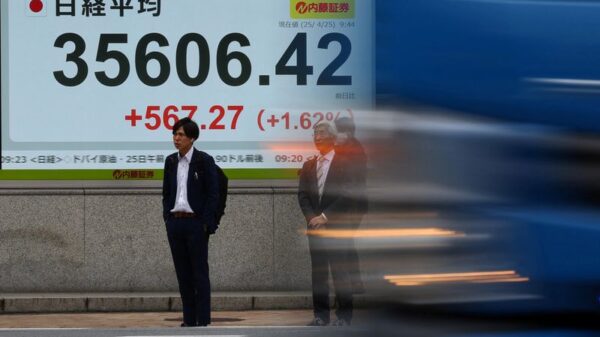U.S. Bond Yields Reach Two-Year High Before Trump’s Inauguration
U.S. bond yields have climbed to their highest levels in two years, reflecting investor expectations ahead of President-elect Donald Trump’s inauguration. The yield on the 30-year Treasury bond rose to 4.85%, marking a significant milestone driven by fiscal concerns and market anticipation of upcoming economic policies.
Market Anticipates Increased Government Borrowing
The surge in bond yields is largely attributed to expectations of increased government borrowing under the new administration. Trump’s fiscal agenda, which includes ambitious infrastructure spending and potential tax cuts, is expected to lead to higher federal deficits, prompting investors to demand higher returns on government debt.
Tax Cuts Fuel Investor Sentiment
Proposed tax cuts have further fueled market activity, as they are anticipated to stimulate economic growth in the short term. However, these cuts may also exacerbate fiscal deficits, contributing to the rise in bond yields. Investors are weighing the potential economic boost against the long-term implications of higher national debt.
Inflation Expectations Drive Yields Higher
Higher bond yields also reflect rising inflation expectations, which have been influenced by robust consumer demand and potential fiscal stimulus. Inflation erodes the value of fixed-income investments, prompting investors to seek higher yields to compensate for anticipated price increases.
Fed Policy in Focus as Yields Climb
The Federal Reserve’s monetary policy is a key factor influencing bond yields. With inflation expectations rising, the Fed may be compelled to adjust interest rates to maintain price stability. This dynamic has added to market speculation and contributed to upward pressure on yields.
30-Year Treasury Bond at 4.85%
The 30-year Treasury bond, a benchmark for long-term borrowing costs, has seen its yield climb to 4.85%. This increase signals investor concerns about long-term fiscal sustainability and reflects broader shifts in market sentiment as Trump’s inauguration approaches.
Corporate Borrowing Costs Expected to Rise
Higher bond yields are likely to affect corporate borrowing costs, as companies face increased expenses when issuing debt. This trend could impact corporate investment decisions, particularly in capital-intensive industries, and may influence broader economic growth patterns.
Impact on Housing Market Dynamics
Rising bond yields are also expected to influence mortgage rates, which are closely tied to Treasury yields. Higher mortgage rates could dampen housing market activity by increasing borrowing costs for potential homebuyers, posing challenges for the real estate sector.
Foreign Investment Shifts
The rise in U.S. bond yields has attracted foreign investors seeking higher returns, particularly from economies with lower interest rates. This inflow of capital could strengthen the U.S. dollar, creating additional implications for trade and export competitiveness.
Fiscal Sustainability Questions Arise
The sharp rise in bond yields has reignited debates about fiscal sustainability. Critics argue that increased government borrowing could lead to unsustainable debt levels, while supporters contend that fiscal stimulus is necessary to drive economic growth and job creation.
Investor Confidence Hinges on Policy Details
Investor confidence remains contingent on the specifics of Trump’s economic policies. While the markets have responded positively to the prospect of tax cuts and infrastructure investment, uncertainties surrounding implementation timelines and funding mechanisms continue to weigh on sentiment.
Equity Markets Reflect Optimism
Equity markets have also reacted to the economic outlook, with major indices showing gains in anticipation of pro-growth policies. The stock market’s upward trajectory underscores investor optimism about the new administration’s ability to deliver on its economic promises.
Potential Risks of Higher Yields
While higher bond yields indicate economic optimism, they also pose risks to the broader financial system. Rising yields can increase the cost of servicing government debt, strain corporate balance sheets, and reduce the attractiveness of equities relative to fixed-income assets.
Trump Administration Faces Balancing Act
The incoming administration faces the challenge of balancing fiscal expansion with debt sustainability. Policymakers will need to carefully navigate the trade-offs between stimulating economic growth and maintaining financial stability, particularly as markets remain sensitive to policy signals.
Conclusion: A Dynamic Economic Landscape
The rise in U.S. bond yields to a two-year high underscores the dynamic economic landscape as Trump’s inauguration approaches. While the market reflects optimism about fiscal stimulus and tax cuts, concerns about long-term debt sustainability and inflation persist. Investors will continue to monitor policy developments closely, as the administration’s actions shape the trajectory of the U.S. economy and financial markets.




































